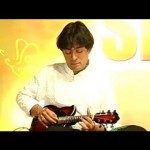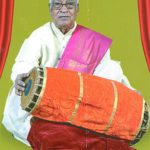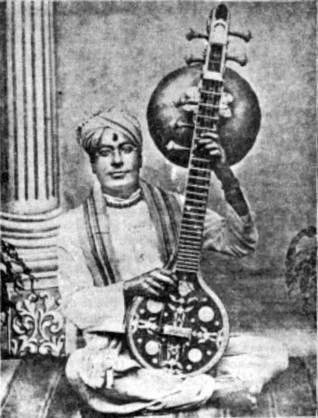
The world of music is at once prolific and passed over. The era of commercial tunes has derided and debased Classical Indic Music like never before. Studio beats and corporate control has taken away from the august styles of more royal ages. The eminence grises of periods past are all but forgotten today.
One such figure who has not received his due is a man mentioned only in passing but is remembered by his instrument: Veena Venkataramanadas.
Background
Venkataramanadas Pantulu was born on February 8th, 1866. He was from a family of Vizianagaram Veena Vidvaans. His father was Govindarcharyulu and his mother was Lakshminarasimhamma. This lineage of Vainikas hailed from the Musical Sabha of the Mysore Maharaaja. Veena Seshanna was an extended family member, and both branches traced descent from Pacchimirium Aadhi Appayya. [2]
At the height of British Colonial Rule in India, there was one princely state that stood out among the riven Telugu lands that gave patronage to traditional Telugu culture. The Vizianagaram Maharajas (and the Pusapathi dynasty which continues today) represent the ancient support that men of feudal power, prestige, and paisa were expected to bestow upon worthy men of culture and learning.
In the court of Vizianagaram, Venkataramanadas was granted the position of Aasthaana Vainika. To musicologists and music history, however, he would become better known as Veena Venkataramanadas. A court musician position brought with it not only perquisites and prestige, but also a pulpit from which the music tastes of the age could be influenced and enhanced.
Maharaja Ananda showered him with land and wealth, and played next to him for almost 2 decades. [2] Indeed, along with Mysore, Travancore, and the later defunct Maratha Kingdom of Thanjavur, Vizianagaram was one of the great centres of musical patronage. [1] It was from here that Veena Venkataramanadas would make an impact on the instrumental stage.
“Venkatramana Das was a dynamic performer. To listen to his concerts was a treat, intellectual and aesthetic. One an average, he practiced for ten to twelve hours a day. His daily practices included (1) technical exercises in four degrees of speed in all the three octaves and (2) Tanas of variegated patterns and tempo.” [2]
Though not much would be documented about his life, he nevertheless left behind a legacy remembered in the princely city of his birth. He would perform throughout the South and mark the way the veena is played to this day.
Sadly, Pantulu gaaru began to lose his hearing 1926. He soon became a recluse and remained mostly at home for the remainder of his life. Appropriately, he resided at Veenavari Veethi in Vizianagaram (veethi means street). Even more fittingly, this long-lived maukhari would live to see India’s Independence, and he passed away about a year later in February 28, 1948.
“He has delighted Madras audiences a number of times with his scholarly performance. His concerts were discourses on absolute music. His alapanas and tanas took rasikas to unknown regions of aesthetic paradise. In many of his concerts he did not have even a mridangam player to accompany him.” [2]
Achievements
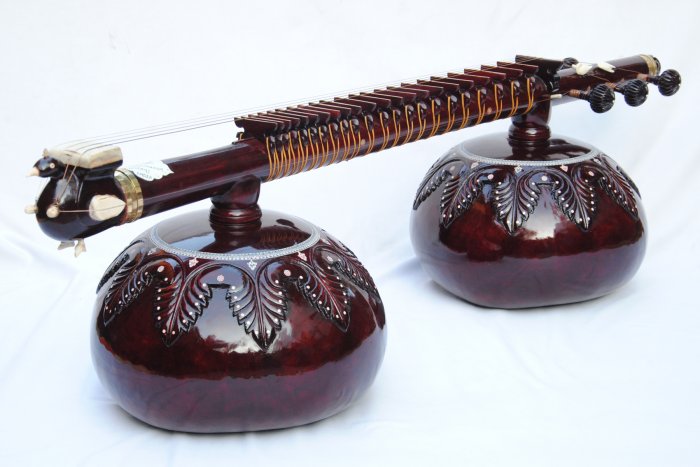
- Ordained Shatkala Chakravarthi by the Vizianagaram Royal Court
- Mysore Maharaaja honoured him with a special mechanical Veena
- Awarded Simha Talatam (ceremonial bracelet) by British Viceroy Curzon
Veena Venkataramanadas was equally adept at Rudra Veena and Sitar (itself originally a Tritantri Veena). However, his instrument of choice was Ekanda Veena, which was fashioned from a single piece of jackfruit wood. [2]
He was famous for producing rich musical tones in a pre-microphone era. A virtuoso known for speed of play, he also displayed tremendous depth of instrumental creativity. [2]
“He played pieces like Koluvaiyunnade (Bhairavi) and Sri Subrahmanyaya Namaste (Kambhoji) with amazing rapidity, every note of the compositions in the trikala sangat is being heard with surprising clearness. When he played trikala tanas, one got the impression that heaps of pearls were literally being dropped on to the floor from the ceiling.” [2]
Legacy
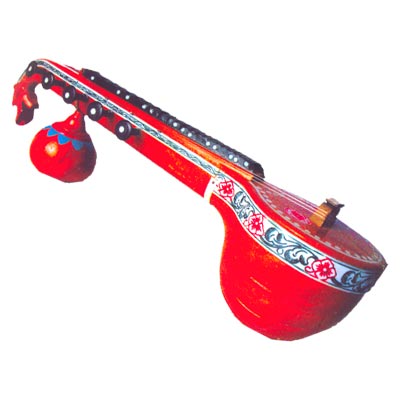
The life and legacy of Veena Venkataramanadas cannot be mentioned without discussing the styles that came before and personalities that were influenced after him.
To understand his place in music history and musicology necessitates understanding the various styles of the Veena playing South.
Veena Playing Styles
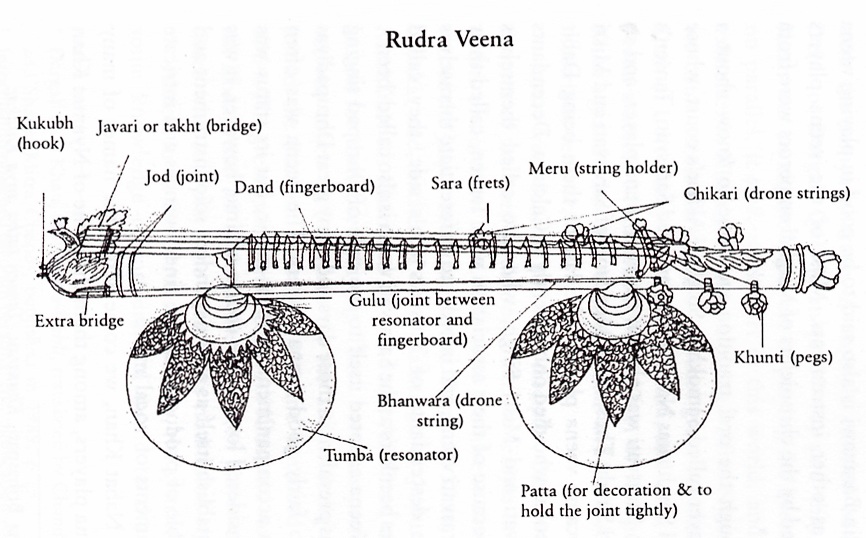
Venkataramanadas Panthulu came to embody what is known today as the Andhra reethi. There were multiple styles (reethis) of veena play in medieval India. These can be reduced down to the various prominent principalities of the period: Thanjavur, Mysuru, and Travancore. The fourth one, is traditionally known as Vijayanagara, but due to past and pre-Independence associations with Vizianagaram (itself inspired by the original), it has become known as Andhra today.
Mysuru
The Mysuru style is known for its structural idiosyncrasies and variations. For example, “the main resonator in the Mysore Veena is very thin and hence too much pressure exerted on the bridge through string inflexions and deep gamakas will slightly sink the top board. Hence to suit the construction the style is more tantrakaari or instrumental. Notes are played more on the frets with shallow gamakas. ” [3] It is notable for split finger techniques, sharp tones, and melodic effects.
Veena Seshanna (1852-1926) and Veena Subbanna (1854-1939) are considered the exemplars of the style. V. Doreswamy Iyengar studied under the former’s disciple, Venkatagiriappa (1857-1951). [1]
Thanjavur
The veena used in Tanjore is much thicker in style. The sound board is much more arched and has 38 small holes around 2 rosaces. The resultant sound is far more subtle in nature and appeals to the nuanced ear. [3]
Veena Dhannammal (1868-1938) is considered a legendary exponent of the school. She herself hailed from a family of court dancers and musicians. Balasaraswati is considered to be one of her musical descendants.
The Karaikudi brothers Subba Rama (1883-1936) and Sambasiva Iyer (1888-1958) represent this style in the present era. The latter’s changes have come to characterise the modern concert style in the sabhas of Tamil Nadu. Indeed the Thanjavur Veena is considered to be one and the same as the Sarasvathi Veena. [1]
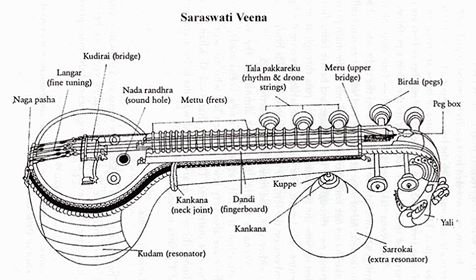
Travancore
Though the veenas are constructed at Thiruvananthapuram and produced in the Thanjavur style, this Kerala reethi has become known as Travancore. It combines the best of the Tanjore and Mysore styles. [3] Trivandrum R. Venkataraman, K.S. Narayanaswamy, and Thrissur Anantha Padmanabhan are the doyens of this style.
Andhra
The Bobbili Veena has become the marker of the Andhra style. It is notable for the drill technique known as Veyisaadhakam, or thousand practices of an alankaram in 3 octaves at 3 speeds. [3] The Andhra style is considered to be a very mesmerising style. Its doyens include Emani Sankara Sastry , Chitti Babu, and Ayyagari Syamasundaram as well as, of course, Venkataramanadas Panthulu. [3] Though similar to Thanjavur, it distinguishes itself in the prescribed right-handed technique and deft and varied use of raaga and thaana. Venkataramanadas Pantulu embodied it.
“The vertical position known as « Urdhva », with the resonator balanced between crossed legs and the neck upright was still the norm in Andhra Pradesh at the turn of the century. It was also widely practiced in Mysore at the end of the 19th century and in all likelihood it was widespread in the other states as well in the middle of the last century”. [3]

References:
- Nijenuis, Emmie te. “Styles of Lute Playing in South India”. https://issuu.com/iias/docs/iias_nl_28 p.14
- “Veena Venkataramana Das”. Nad Sadhna. https://nadsadhna.com/indian-music/life-sketch-of-indian-musicians/
- “Veena Styles”. Nada Surabhi. http://nadasurabhi.org/articles/60-veena-styles
